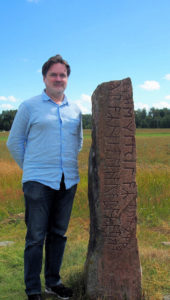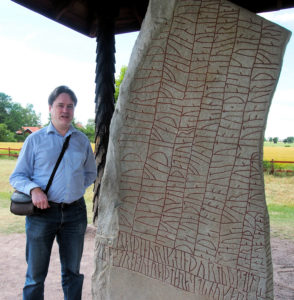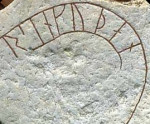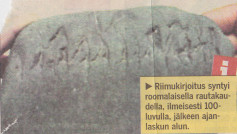The oldest runestones in Sweden are written in a language that was called Old Scandinavian (or Proto Norse). In that time the language was understtod throughout Scandinavia.

I visited one of the runestones in Järsberg, Sweden, in the summer. And I encountered a verbform that is still easily read today: ᚹᚫᚱᛁᛏᚢ writu (write). So despite the almost 1500 years there is still something very common with the language.
More:
- Järsberg at runes.verbix.com: …ᚢᛒᚫᛉ ᚺᛁᛏᛖ ÷ ᚺ=ᚫᚱᚫᛒᚫᚾᚫ=ᛉ ᚺ=ᚫᛁᛏ… ᛖᚲ ᛖ=ᚱᛁᛚᚫᛉ ᚱᚢᚾᛟᛉ ᚹᚫᚱᛁᛏᚢ
- Conjugate Old Scandinavian verbs
- About the Old Scandinavian AKA Proto Norse in wiki.verbix.com




